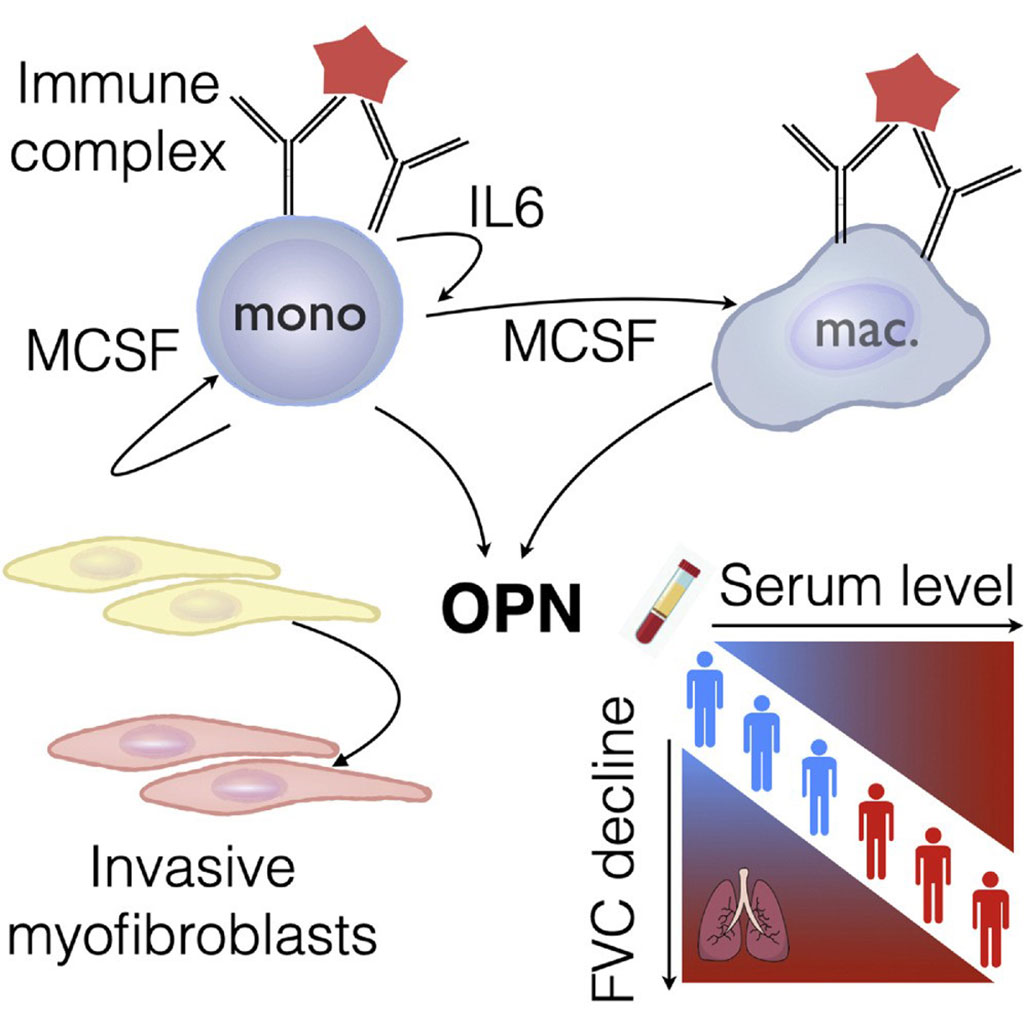Osteopontin Linked to Progressive Lung Scarring in Scleroderma Patients
By LabMedica International staff writers
Posted on 28 Dec 2020
Systemic sclerosis (SSc) is an autoimmune disease characterized by a distinct pathogenic triad of microvascular damage, dysregulation of innate and adaptive immunity, and fibrosis involving skin and many internal organs, such as the heart, kidney, and lungs.Posted on 28 Dec 2020
Although mortality because of renal involvement has significantly decreased since the adoption of angiotensin pathway blockade, the proportion of deaths because of interstitial lung disease has continued to increase, making it the leading cause of death of SSc patients. Biomarkers that help identify patients at a greater risk of progressive disease are considered vital for successful clinical development of novel treatment modalities.

Image: Schematic diagram of Osteopontin Links Myeloid Activation and Disease Progression in Systemic Sclerosis (FVC=forced vital capacity) (Photo courtesy of University of Michigan).
Scientists from Genentech (South San Francisco, CA, USA) and their colleagues demonstrated that immune complexes (ICs) activate human monocytes to promote lung fibroblast migration partly via osteopontin (OPN) secretion, which is amplified by autocrine monocyte colony stimulating factor (MCSF) and interleukin-6 (IL-6) activity. Osteopontin levels of all the serum samples in patients from different cohorts and in age/sex matched healthy donors were quantified with Human Osteopontin (OPN) Quantikine ELISA Kit (R&D Systems, Inc, Minneapolis, MN, USA). An observational SSc-ILD cohort included 102 SSc patients with high-resolution computed tomography (HRCT).
Bulk and single-cell RNA sequencing demonstrated that elevated OPN expression in SSc lung tissue is enriched in macrophages, partially overlapping with CCL18 expression. Serum OPN is elevated in SSc patients with interstitial lung disease (ILD) and prognosticates future lung function deterioration in SSc cohorts. Serum OPN levels decrease following monoclonal anti-IL-6 receptor treatment, confirming the connection between IL-6 and OPN in SSc patients.
Thiru Ramalingam, MBBS, PhD, a senior author of the study, said, “When the macrophage is activated by immune complexes, we discovered that it secretes an abundance of a protein called osteopontin, previously implicated in fibrosis. High levels of this protein were confirmed by creating an in vitro culture, meaning outside the body, to emulate the immune complex immobilized in a SSc-ILD patient's lung tissue.”
The authors concluded that their data suggest a plausible link between autoantibodies and lung fibrosis progression, where circulating OPN serves as a systemic proxy for immune complexes driven profibrotic macrophage activity, highlighting its potential as a promising biomarker in SSc ILD. The study was published on November 17, 2020 in the journal Cell Reports Medicine.
Related Links:
Genentech
R&D Systems, Inc









 Analyzer.jpg)



